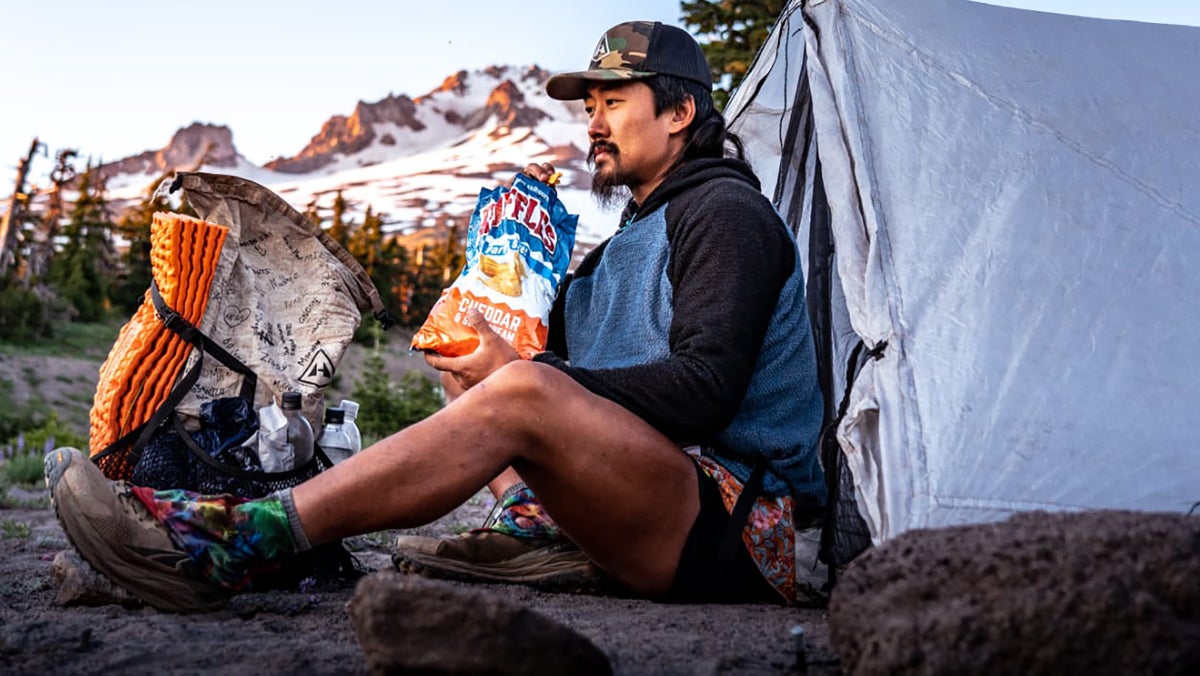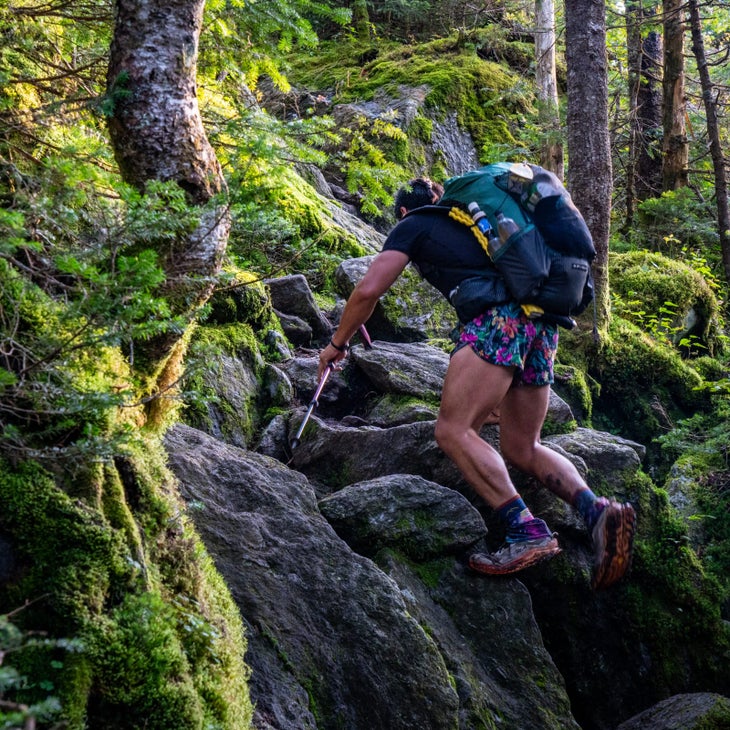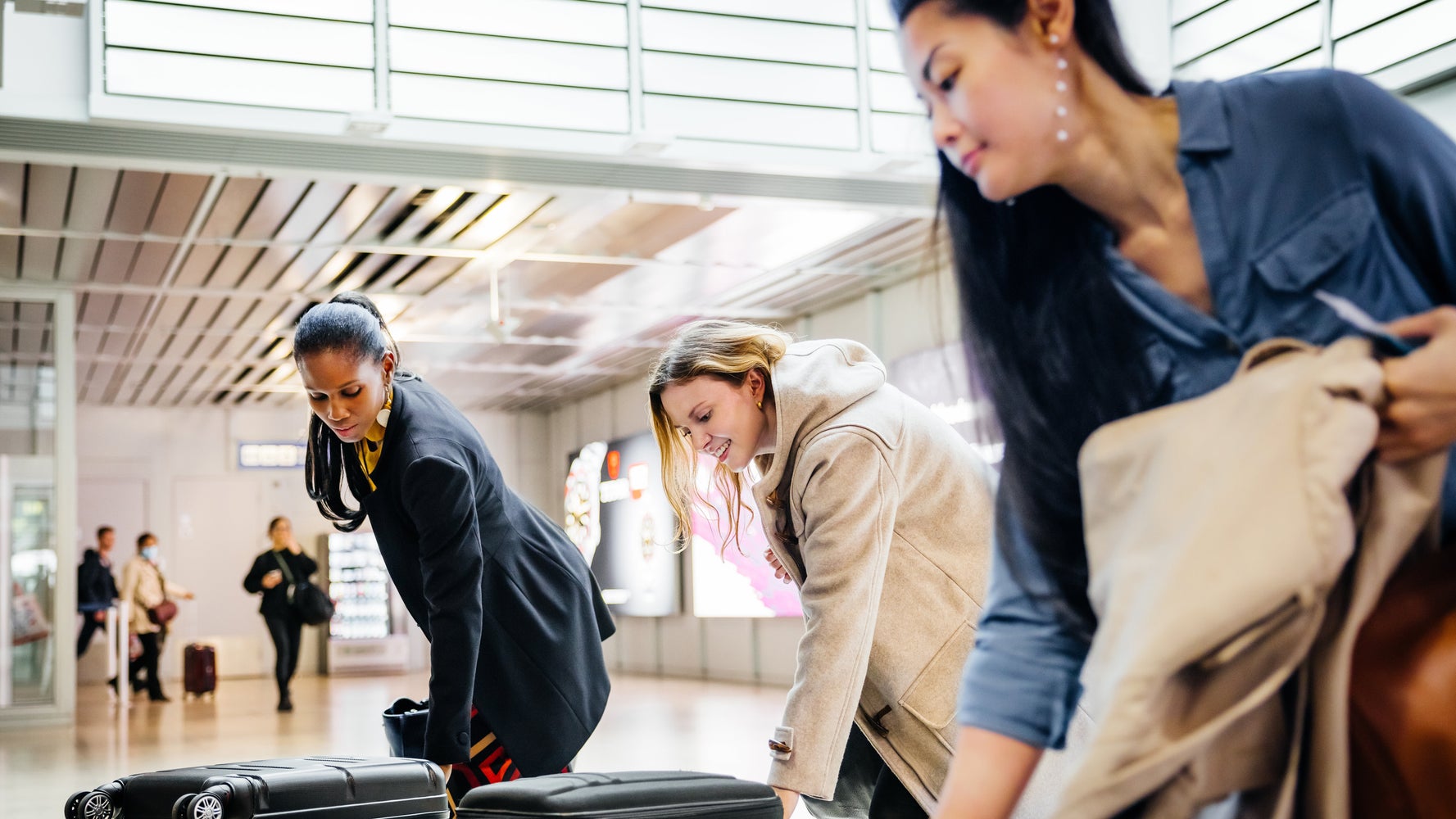
Jack Jones was not a cheat-code kid.
When he played computer games like World of Warcraft or EverQuest, Jones always wanted to know about the next level, where the struggles and the stakes would both be a bit higher. This characteristic hasn’t changed. Jones, now 38, is better known as Quadzilla, a hiking powerhouse famous not only for the gams that gave him his trail name, as well as his charismatic YouTube channel, and his righteous political advocacy, but also for his willingness to push new extremes. Midway through a 100-mile race in 2021, for instance, Jones decided that he would pursue the Calendar-Year Triple Crown in 2022: the Appalachian, Continental Divide, and Pacific Crest trails in the same year. With that done, Jones opted to level up in a different way during 2024: to hike the entire Appalachian Trail while spending just $1,000 total on gear, food, and shelter.
“I knew I could hike the AT, that I could do 30-mile days,” Jones tells me from Vietnam, where the Army veteran has begun an indefinite self-imposed political exile. “I knew this might force me to go two weeks without a shower. It might force me to eat a whole chicken in a Walmart parking lot—and then continue on.”
So on May 21, 2024, Jones—and a younger hiking friend, Tate “Pyro” Dobson—left the trail’s southern terminus in Georgia, carrying $383 worth of gear he’d methodically made himself or ordered after hours of research on AliExpress, a sort of Chinese Etsy-meets-Amazon in overdrive. In the past, Jones had carried backpacks that cost more, but he was attempting to reach Maine with an $80 backpack, an $18 jacket, and shoes he purchased on clearance. “It was my extra layer of challenge,” he says, grinning. “Being a little more creative to be a little more comfortable is fun.”
The sacrifices came quickly. Aiming to finish in less than 100 days, or just more than half of the six-month average, Jones left Georgia late, which exposed him to the soaring Southern heat. An early encounter with a poison ivy stand left him with a massive rash that he suspects he could have mitigated with more showers and laundry. Those, however, would have cost money he intended to save.
The poison ivy was but a prologue for what came next, for what Jones worried would cost him not only his budget hike but also his left leg. He’d struggled with shoe selection; thru-hikes can often burn the tread and compress the cushion in a half-dozen pairs, a line item that can push a grand itself. Jones had ordered multiple shoes from AliExpress, only to realize that their floppy construction and nearly non-existent grip created their own dangers. So when he found a deeply discounted set of used name-brand kicks at REI, he rejoiced. “Turns out, if there’s a whole bunch of used stock of a shoe,” he says, “it’s probably junk.”

Less than 200 miles into the hike, a plastic piece inside the shoe began cutting into his foot. He knew he needed something else, so, in desperation, he grabbed a pair of waterproof trail runners from a North Carolina hiker box. Not long after he entered Virginia, the fever and cramps began, an infection steadily spreading up his left leg in visible lines. He caught a ride to an urgent care with a prison guard, happily popped open a bottle of antibiotics, and found a free place to stay courtesy of an old friend who happened to be a doctor.
“If I’d let that go for a week, I could have died. It was that serious,” says Jones. “I got cut because I tried to be cheap with shoes. So there’s a lesson, right? Don’t cheat on footwear.”
Jones knew his budget was permanently blown, since he estimated the doctor visit would cost him $250. (He hasn’t been billed yet, either thanks to a mistake or Missouri Medicaid; he’s not asking.) He opted to relax just enough to buy what was necessary—including new Altras for the rest of the trail—but not to splurge. He made it to New York, or two states beyond the AT’s halfway mark, on his preset $1,000. By the time he’d reached the northern endpoint at Mount Katahdin, after tacking on the tricky northern half of Vermont’s Long Trail and slowing down to enjoy Maine’s splendor, he’d spent $2,397.19, or less than half of the average amount spend by AT thru-hikers.
Several lessons—buying robust hiking shoes included—emerged on the way to Maine. Where candy bars were once a fast-fuel staple of Jones’s diet, he realized they weren’t as cost-efficient as he’d assumed. He didn’t eat one on the entire trail. Instead, he made his own trail mix, combining cashews with coconut flakes and chocolate chips from the baking aisle, turning $10 into 100 miles of calories. For dinner, he stayed steady with two packets of Ramen noodles and a few spoons of peanut butter. This might, he says, have been his most nutritious thru-hike.
He would often camp on the edges of towns, too, so that he could get in and out with groceries while avoiding the temptation to sit down for an expensive restaurant meal, or to book a room. And in towns where he did stop, he looked to split a hotel room or hostel with other hikers, opting for a spot with a kitchen whenever possible so that they could cook big, cheap meals. And when a fast-food opportunity presented itself, Jones knew to look first for an app before ordering. His first restaurant meal came at a Tennessee McDonald’s, several hundred miles into his trip. “2,000 calories for $3?” he says, beaming as if reliving the experience in real time. “That’s amazing.”
As Jones walked, he kept a spreadsheet of his expenses, clocking the costs of his resupplies and stays. I’m struck by the restraint evident in those numbers. If you’ve ever gone to a grocery store while hungry, you know well the temptation to throw everything into the cart. But he broke $80 only once, with many of his purchases landing around $35.
There are some higher-level takeaways, too, from Jones’ extreme budgeting. Jones is a longtime practitioner of Vipassana meditation, having done nearly ten silent retreats. He doesn’t maintain a formal practice on trail, because he’d fall asleep so fast, but it alters the way he handles hardships outside. “I knew it wasn’t going to be hot forever. I knew I wasn’t going to have poison ivy forever,” he says. “I try to maintain an equanimity of my mind and an awareness of my body, so if it’s cold, I can stop myself from saying ‘I wish I wasn’t cold.’ It’s a constant process.”
He also had his physical fitness to thank. If you’ve seen a photo of Quadzilla, you know Jones is something of a beast—a veteran who started a Crossfit gym and went on to fight wildland fires, win ultramarathons, and capture one of the rarest feats in American hiking with the Calendar-Year Triple Crown. His legs appear sculpted in marble by Michelangelo. But the more you can do to start a trail strong rather than relying on the trail to condition you while you walk, the faster you can move and the more money you can save. “If it took me twice as long to do it,” he says, “my cost might have doubled. Being in shape is a big one.”
Jones acknowledges that hiking on such a minuscule budget raises some ethical concerns, particularly when it comes to his gear. He knows that the down in the jacket he eventually left in a hiker box wasn’t sustainably sourced, and he knows that all of the gear he ordered on AliExpress was so cheap because the wages are low. But these, he says, are issues beyond the bounds of a thru-hike, questions that somebody slipping into the woods for a few months cannot answer. “Someone shouldn’t be kept out of the outdoors because they can’t afford the most ‘ethical’ gear,” he says. “If someone’s making good money, then, yes, buy all the cottage brands and support them. But there is no clear-cut answer here.”
There is a possible alternative, though. Jones’ hiking partner, Pyro, didn’t try to stick to $1,000 as a theoretical exercise or a challenge to himself. When he headed east to join Jones, he estimates he had $1,500 available for the whole trip. In the two weeks between deciding to join Jones’ mission and leaving for it, Pyro mailed some old shoes to assorted points along the trail and made his own backpack.
For 2,200 miles, Pyro raided hiker boxes for the best snacks he could find, dumpster-dove to find chocolate milk (“It was hot, but it tasted fine.”) and baby formula, and accepted the generosity of strangers, including a free pair of used shoes from a trail angel. He learned that a plastic bag full of spaghetti and eggs is a very cheap and delicious meal to pack out of town, and that shoes can be stitched together with mere dental floss. He barely bought new gear at all, and he spent $1,300.
I asked Pyro if he could have made it for $1,000, after all. “That was never my goal, but easy,” he says, laughing. “All you have to do is go out to eat less.”
The post He Tried to Hike the Appalachian Trail on a $1,000 Budget. Here’s What He Learned. appeared first on Outside Online.















